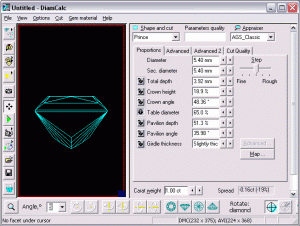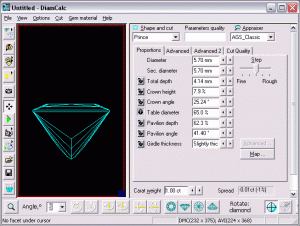I''ve been doing some research on the internet trying to achieve the an "ideal" princess and have started to confuse myself... I see some places saying that Depth - 63-70%, Table - 65-72% is ideal, then I see another chart where Depth - 64-75%, Table - 62-68% is ideal and also recommending that the table be less % than the depth. Some of you will kow where I get these numbers..
Since I''ll be buying off the internet I can''t view these side-by-side... in your experience what works best?? They will provide me with a sarin report, but will this tell the whole story??
Here''s an example of 2 diamonds I''m considering, the dilemma:
Depth: 72
Table: 66
Polish: Ideal
Sym: Ideal
Girdle: Sl Thick
Depth: 65
Table: 68
Polish: VG
Sym: VG
Girdle: Thin-Sl Thick
All other aspects are relatively the same... am I splitting hairs here 100x.. or will one "outperform" the other.
Any other info I should look for would be greatly appreciated Eg Crown and Pavillion angles which are ideal?.
Thank you.
Since I''ll be buying off the internet I can''t view these side-by-side... in your experience what works best?? They will provide me with a sarin report, but will this tell the whole story??
Here''s an example of 2 diamonds I''m considering, the dilemma:
Depth: 72
Table: 66
Polish: Ideal
Sym: Ideal
Girdle: Sl Thick
Depth: 65
Table: 68
Polish: VG
Sym: VG
Girdle: Thin-Sl Thick
All other aspects are relatively the same... am I splitting hairs here 100x.. or will one "outperform" the other.
Any other info I should look for would be greatly appreciated Eg Crown and Pavillion angles which are ideal?.
Thank you.








300x240.png)